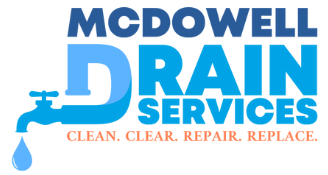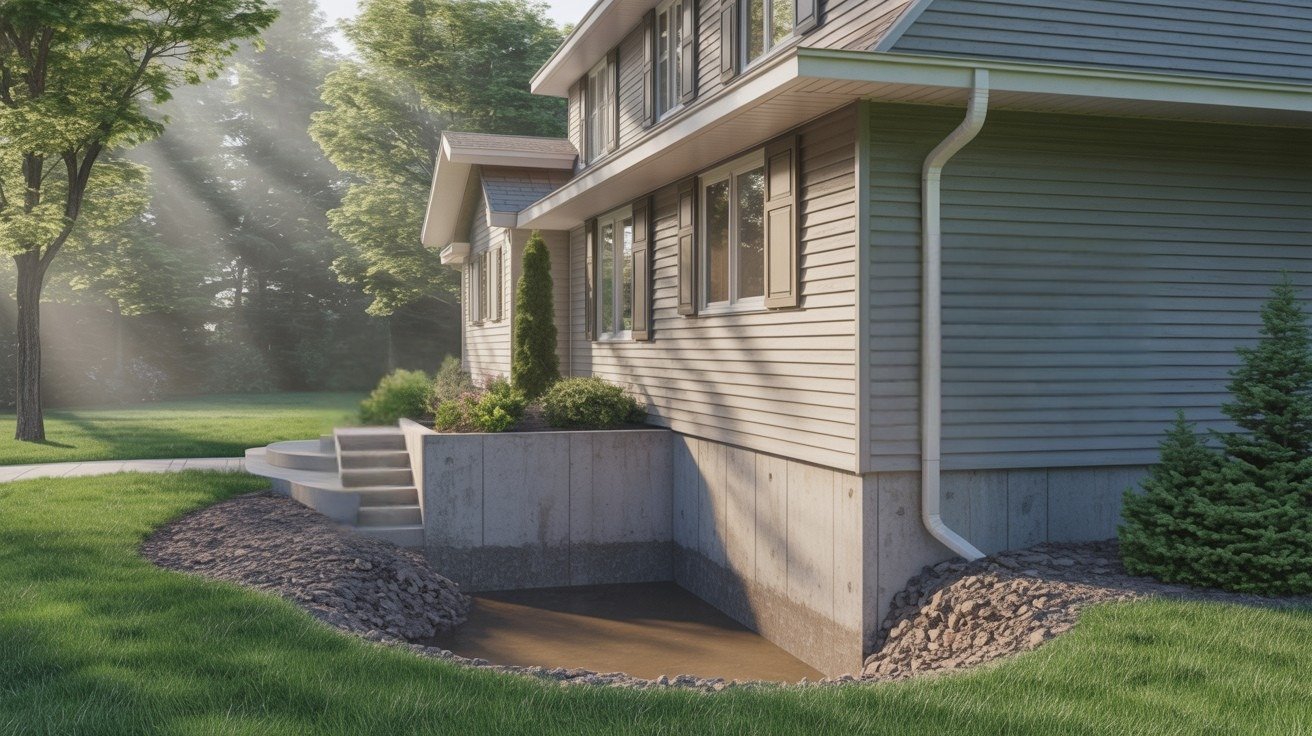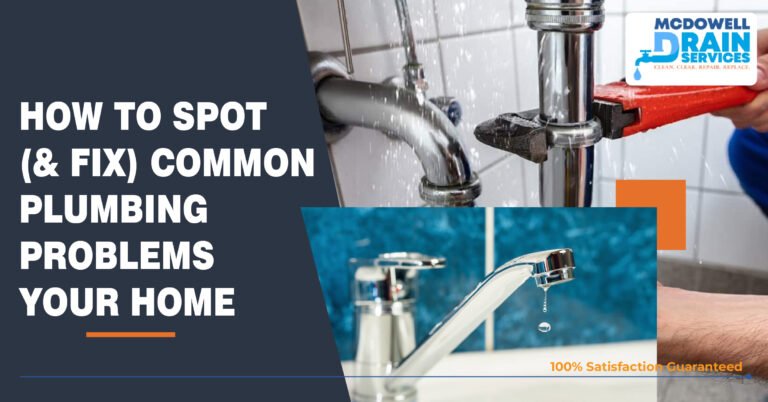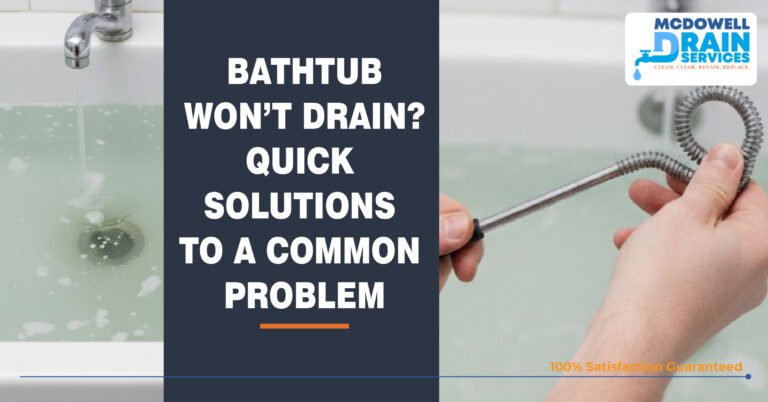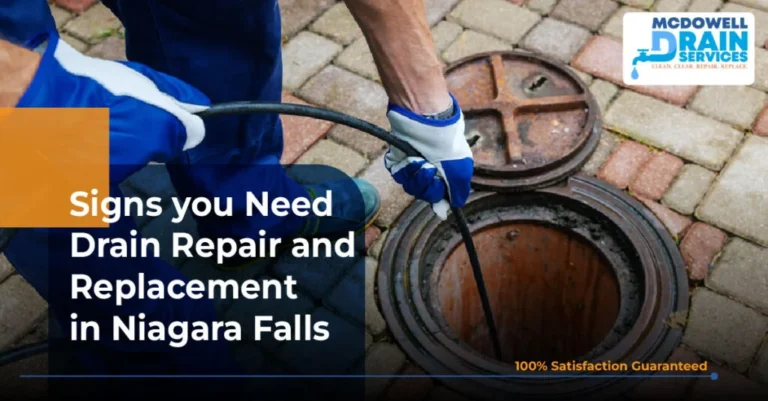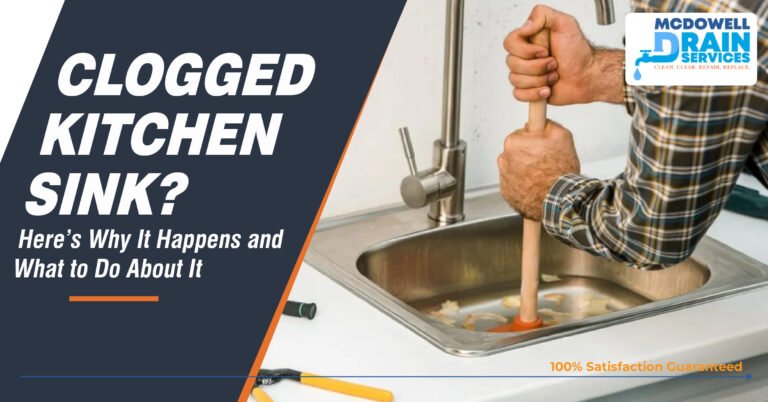For homeowners across the Niagara Region, from St. Catharines to Niagara Falls, the sight of a damp basement after a heavy rain or spring thaw is all too common. This unwelcome moisture is often caused by an invisible but powerful force known as hydrostatic pressure. Understanding this pressure is the first step toward a permanently dry and secure foundation for your home. With over 45 years of dedicated service to the Niagara community, McDowell Drain & Waterproofing has the local expertise to diagnose and solve these complex water issues, protecting your most valuable asset.
This guide will break down what hydrostatic pressure is, how to spot the warning signs, and what professional solutions are available to homeowners in Niagara Falls, Welland, Thorold, Fort Erie, and beyond.
What Is Hydrostatic Pressure?
Hydrostatic pressure is the force exerted by standing or accumulated water against a surface, such as your home’s basement walls and floor. When the soil surrounding your foundation becomes saturated, the weight of the water creates immense pressure. Because concrete is naturally porous, this force can push water through tiny cracks, gaps, and even solid concrete, leading to leaks, dampness, and significant structural damage over time.
A cubic foot of water weighs over 60 pounds, and when the soil around your home is soaked, tens of thousands of pounds of pressure can be exerted on your foundation. In the Niagara Region, this issue is often compounded by our unique climate and soil conditions. The area’s clay-rich soil absorbs and holds water rather than allowing it to drain away quickly. When combined with heavy rains or rapid snowmelt, the soil becomes heavily saturated, dramatically increasing hydrostatic pressure against your home’s foundation—often leading to issues that eventually require drain repair and replacement.
What Causes Hydrostatic Pressure to Build Up?
The primary cause of hydrostatic pressure is excess water in the soil surrounding your foundation. This buildup can result from several contributing factors:
Expansive Soil
Many areas in Niagara have clay-rich soil that expands significantly when saturated. As it swells, the soil not only holds moisture against the foundation but also exerts physical pressure on the walls. In fact, some clay soils can expand by more than 10% in volume when fully soaked.
Heavy Rainfall and Snowmelt
The Niagara Region receives nearly 1,000 millimeters (39 inches) of precipitation annually. During wet seasons, the ground becomes saturated quickly, causing water to accumulate around your foundation.
Poor Property Grading
If your property slopes toward your home instead of away from it, water naturally pools near the foundation, increasing saturation and pressure.
High Water Table
Some parts of Niagara sit on a naturally high water table, meaning moisture is consistently present around the foundation—making hydrostatic pressure almost unavoidable without proper waterproofing.
Clogged or Improper Gutters
Clogged gutters or short downspouts dump massive amounts of water directly next to your foundation. One inch of rainfall on a 1,000-square-foot roof equals over 600 gallons of water. Without proper drainage, this water saturates the soil rapidly and overwhelms the area around your basement—often contributing to problems that later require clogged drainage service.
How Do You Fix Problems Caused by Hydrostatic Pressure?
The only real solution is to relieve the pressure by implementing a full water management system. This goes far beyond patching cracks—it requires redirecting water away from the foundation efficiently.
Interior Waterproofing Solutions
Interior waterproofing manages water that has already penetrated the foundation or is rising from below the basement floor.
Interior French Drain (Weeping Tile)
A trench is cut around the basement floor perimeter, where a perforated drainpipe is installed to collect water from beneath the slab and cove joint.
Sump Pump System
The collected water is directed to a sump pit, where a pump ejects it safely outside your home. The sump pump is the heart of any interior system and must be reliable and properly installed.
Interior systems are excellent for hydrostatic pressure caused by a high water table or rising moisture.
Exterior Waterproofing Solutions
Exterior waterproofing stops water before it reaches your foundation walls. This method is more invasive and costly but offers long-term structural protection.
Waterproof Membranes
Once the soil is excavated, contractors clean the foundation walls and apply a strong waterproof membrane. This prevents moisture from entering the concrete.
Exterior Drainage System
A perforated drainpipe is installed at the base of your foundation to steadily redirect water away from the home.
Exterior waterproofing directly combats the forces that cause water intrusion and is often recommended when dealing with issues like a leaky basement.
Common Warning Signs of Hydrostatic Pressure
Look for these indicators:
Water Seepage
Water entering your basement, especially at the cove joint (where floor meets wall), is the most common sign.
Foundation Cracks
Horizontal or stair-step cracks are severe signs of soil pressure pushing on your walls.
Bowing or Buckling Walls
This is one of the most serious results of hydrostatic pressure and requires immediate action.
Efflorescence
A white, chalky substance on your walls indicates that water is seeping through the concrete and evaporating, leaving mineral deposits behind.
Dampness and Musty Odors
A humid basement or musty smell usually means moisture vapor is being pushed through your concrete due to hydrostatic pressure. In severe cases, homeowners may also need protective systems like a backwater valve installation.
Why Choose a Local Expert for Hydrostatic Pressure Issues?
Choosing a local contractor with deep regional experience is crucial for solving these issues permanently. McDowell Drain & Waterproofing has spent over 45 years addressing the unique soil, climate, and construction challenges in Niagara.
We’re family-owned, fully licensed, and insured—and we care about doing the job right. Whether your home needs interior drainage, exterior waterproofing, sump pump installation, or a specialized service like trenchless sewer replacement, our team delivers long-term protection backed by a 20-year transferable warranty.
Don’t let hydrostatic pressure compromise your home’s safety and value. Contact McDowell Drain & Waterproofing for a professional assessment and free estimate.
FAQs
1. Can hydrostatic pressure cause a foundation to collapse?
Yes—if ignored, extreme pressure can bow walls inward and eventually lead to collapse. Immediate action is necessary when horizontal cracks or wall movement appear.
2. Does a sump pump alone solve hydrostatic pressure?
No. A sump pump must be part of a larger interior drainage system (such as a French drain) to effectively relieve pressure.
3. Is interior or exterior waterproofing better?
Both work, but serve different purposes. Interior systems relieve pressure; exterior systems block water entirely. The right choice depends on your home and specific issue.
4. What does it cost to fix hydrostatic pressure in Ontario?
Interior waterproofing ranges from $3,000–$10,000. Exterior systems typically cost $10,000–$30,000 depending on depth and home size.
5. Can I relieve hydrostatic pressure myself?
Not effectively. Professional drainage systems and pumps require experience, tools, and understanding of water behavior.
6. What is a French drain and how does it help?
A French drain is a trench with a perforated pipe and gravel that collects and redirects groundwater, relieving pressure around your foundation.
7. Will sealing cracks stop hydrostatic pressure?
No. Crack injection treats symptoms, not the root cause. Water will find another path unless pressure is relieved.
8. How do I know if the water is from hydrostatic pressure or a plumbing leak?
Hydrostatic water appears after rain or snowmelt and typically enters at the cove joint. Plumbing leaks can happen anytime and are localized around fixtures. A professional inspection provides certainty.
